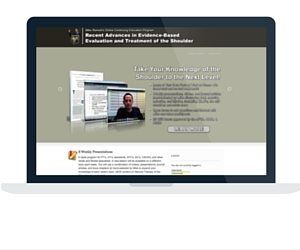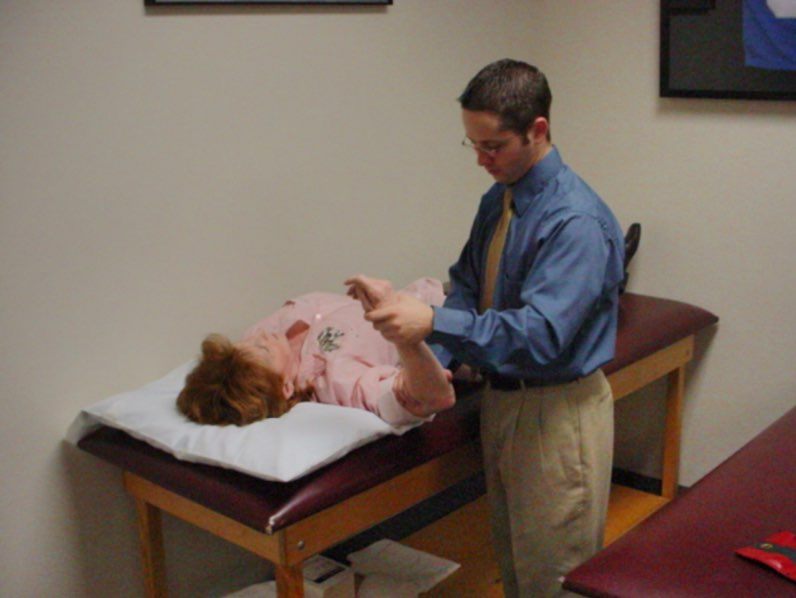If you have ever worked with someone with a stiff and painful shoulder, you know how challenging it can be to gain motion. Regardless of if this is a postoperative shoulder, someone that gets tight from shoulder impingement, or someone with adhesive capsulitis, push too hard or too fast often backfires and causes them to get worse!
One of the more common questions I get from students and new clinicians is – “how do you know when to push range of motion.”
Luckily, there is a pretty simple way to knowing when to push a stiff and painful shoulder and when to back off.
Assess End Feel

Every joint has a normal end feel. Some common examples are:
- Boney: Hard end feel of two bones approximating. Elbow extension is a good example.
- Capsular or Ligamentous: Often described as stretching a piece of leather. This is normal joint end feel, such as with shoulder external rotation
- Muscular: This is more like stretching a piece of rubber, like when stretching the hamstrings
- Tissue Approximation: When the mobility is stopped because you run out of room to move, such as during elbow or knee flexion.
- Empty: Pain does not allow you to get to the end of the range of motion, you stop in the middle of the range.
- Spasm: An abrupt end of the movement that feels as if the person is in pain and guarded. This feels like the muscles are stopping the motion and spasming.
Don’t Push Through a Spasm End Feel
A simple rule I have always followed and has helped me know when to push motion with a painful and stiff shoulder is to never push through a spasm end feel.
If someone presents with a spasm end feel, your primary treatment objective should switch from trying to gain motion to trying to reduce spasm. Attempting to push through the spasm almost always backfires.
You’ll know you can push harder when the spasm end feel changes to a capsular end feel. That’s your cue to get more aggressive. But… be careful! It’s possible to push too hard or too fast again and revert back to a spasm end feel.
Learn How I Treat the Stiff Shoulder
If you are interested in mastering your understanding of the shoulder, I have an amazing online program teaching you exactly how I evaluate and treat the shoulder!

- The evaluation of the shoulder
- Selecting exercises for the shoulder
- Manual resistance and dynamic stabilization drills for the shoulder
- Nonoperative and postoperative rehabilitation
- Rotator cuff injuries
- Shoulder instability
- SLAP lesions
- The stiff shoulder
- Manual therapy for the shoulder
The program offers 21 CEU hours for the NATA and APTA of MA and 20 CEU hours through the NSCA.






